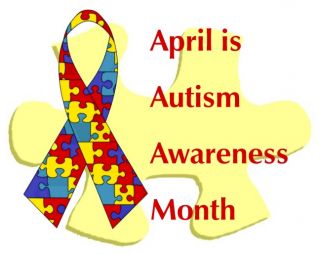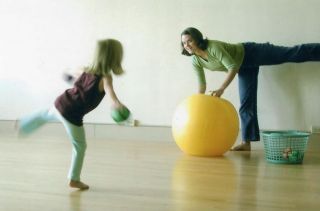Autism
Dance/Movement Therapy and Autism
Building relationships through movement.
Posted April 2, 2014

With numbers now being reported from the Center for Disease Control that 1 within 68 children have an autism diagnosis, it’s pretty clear that autism is a major health crisis, yet still in many ways it is a medical mystery.
Families of those with autism are constantly seeking alternative ways to support their children and there are billions of research dollars spent to find the best method, the best approach, and the best way to help people with autism rise to their fullest potential. Dance/movement therapy is one approach that is gaining more attention for its unique capacity to work directly with the core deficits of autism.
As a form of creative arts therapy, dance/movement therapy occurs within a therapeutic relationship with a credentialed therapist and uses the expressive elements of dance and movement as a method of assessment and intervention. The goal of dance/movement therapy is not like that of a dance class where teaching stylized steps or routines are the focus, nor is it an exercise class, directly focusing on the development of motor skill or physical release. All of these goals certainly can be addressed, but there is so much more that occurs. Instead, dance/movement therapy is a carefully attuned therapeutic process that can look differently depending upon its participants. A therapist can work with one individual at a time, focusing on individual needs or with others in a small group, attending to moments of shared focus and social engagement. They can also work alongside parents and families helping them to build the quality of the parent/child relationship. Dance/movement therapy has the capacity to meet people with autism in many ways. This approach is not only unique, but unlike many treatment approaches in autism, the goal in dance/movement therapy is to channel the communication patterns into “dances of relationship.”
Because there is such a wide spectrum, there isn’t really one way that works for all as the “entry point” for building connection with those with autism. Instead, the “entry point” in order to build relationship, has to start from where the person is. We need to learn what their way of processing is. We need to ask ourselves how do I speak their language first in order to find a place of mutuality? The only universal language is a language that is communicated through our bodies and through our movements. It is universal because we all communicate nonverbally whether we have an autism spectrum disorder or not. So that has to be the place where we begin. As a dance/movement therapist, I help make sense out of the meaning that occurs within this kind of non-verbal exchange.

Here is an example of how dance/movement therapy has been used to connect nonverbally, and build meaning from this connection. I worked for several years with a girl on the autism spectrum who, along with her parents, had dealt with many challenges typical to this disorder. She had very limited verbal communication. She was highly invested in objects, and things rather than people or the social interactions with others. Her sensory system was often over stimulated and this overwhelmed her and she could become agitated and anxious, even aggressive. I remember a day very vividly when we were moving together in a dance/movement therapy group with other children and we were warming up our torso, twisting from side to side and joining through a unifying rhythm. Just the experience of moving in rhythm together meant we were joined together. This was joyful and enlivening. At one point, in our twisting dance we actually began twisting towards each other spontaneously, and then away. This dance became a metaphor in our relationship, the movement towards, and the movement away. I am often reminded that even if these children move away from me. The action of choosing to “reject” my social invitations is still a way of relating. Rejection is still a form of social communication. Therefore, when the twisting towards and away happened that day, I invited it, and used the dance process to expand it and turn it into a dance of communication. As we twisted towards each other, I put my hand up and non-verbally offered to connect with her hand. She took me up on this offer and touched her hand with mine. Our twisting dance became less about moving away and more about moving towards each other. This spontaneous greeting that occurred non-verbally then turned into a wave, then grew spontaneously into a high five, and culminated in a verbal expression, she said, “hi.”
This was quite a moment for us. We had made connection. I felt it and so did she. All of this began from a process of following her cues, meeting her in her language first. The initial communication through the body eventually led to a spontaneous verbal expression, initiated directly from her own expressive self. All of this grew directly out of the spirit of play and movement expression that enlivened social interaction and relationship formation. While moving in rhythm together, there was a sense of community, connection, and an experience for both of us that we were not alone, but together.
It is important to note that the intention is to first understand the person with autism, to join with them, and then to help them modify their communication in a way so that repetitive restrictive behaviors can become channeled, the nervous system can settle, and social engagement can begin. This is dance/movement therapy’s starting point.
These powerful moments don’t happen all the time, the process is important. The experiences of following rhythm, pacing, and the establishment of a trusting therapeutic alliance is important to any treatment process. However, they are also important in the parent-child experience.
There is a true reality here. The lack of social reciprocity from children with autism as well as their behavioral disturbances and language deficits, tends to make this disorder difficult and stressful for parents in a manner that is different from other developmental disorders. Parents rely as much on the child’s communication signals as the child relies on the parent’s signals. So, the loss of this engagement and intentional, interaction can feel devastating. Unfortunately, there is no treatment right now that can address the “biology” of autism, but dance/movement therapy can certainly directly address this deep “human effect” of autism. By helping parents experience how to attune, join, connect, and understand their child through the use of nonverbal language, dance/movement therapy can support parents in forming warm, empathic and satisfying relationships with their children.
Feeling understood, for all of us, is a biological imperative. People with autism are no exception. Neither are their parents and families.
Therefore, the major strength that dance/movement therapy has in working with people with autism is its ability to produce treatment outcomes in the area of social relatedness, especially in the formation of relationships.
The journey into truly understanding autism requires resonance into their language; we can begin to do this by first making human to human contact…the first way to do this is through our bodies.
Click here to watch a video of this speech from the "ADTA Talks."
© Christina Devereaux, PhD, LCAT, LMHC, BC-DMT
For more information about dance/movement therapy please visit www.adta.org


